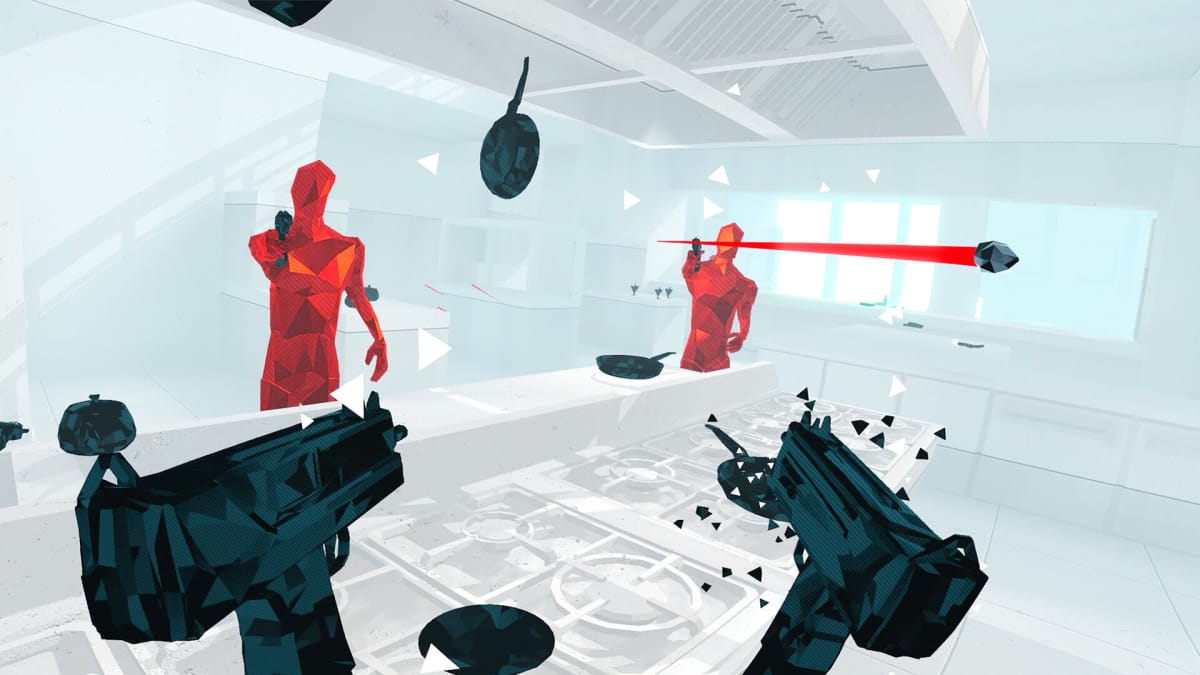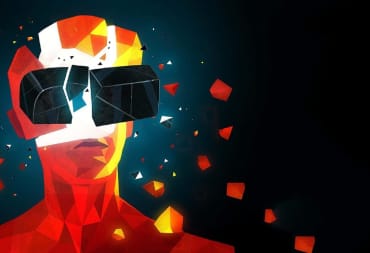Superhot VR is being review bombed on Steam after its developers removed two scenes relating to self-harm from the game. Prior to their removal, it was possible to disable the scenes using a "sensitive content" toggle in the options menu, but they've now been completely removed.
Why is Superhot VR getting review bombed?
The removal of these two self-harm scenes was announced by Superhot VR developer Piotr Iwanicki via Discord. One of the scenes tasks the player with aiming a gun at their head and pulling the trigger to progress, while the other requires jumping off a building. In his message, Iwanicki says the version of Superhot VR that includes the scenes is "now history" and that the team is "not erasing it - we're simply living on, responsibly". Iwanicki says he doesn't want scenes depicting or alluding to self-harm to be part of the Superhot fabric, and so the team is removing them without the option to re-enable them.

After the removal of the scenes, Superhot VR started getting review bombed on Steam. The content of the reviews is fairly predictable; it's mostly users accusing the developers of "virtue signalling" or "listening to Redditors and censoring the game". Many of the reviews note that it was previously possible to disable the scenes, but that they're now not available in the game for any player. It's not just Superhot VR, either; negative reviews are starting to appear for Superhot and standalone expansion Superhot: Mind Control Delete, pointing to the changes made to Superhot VR. It's worth noting that the self-harm content doesn't appear in either of the other games.
Why did the developers remove these scenes?
In his original Discord message, Iwanicki says the narrative for Superhot VR was "edgy" and extraneous to the fundamental appeal of the franchise, which he sees as being its time-stopping gameplay. In a follow-up message to a Discord user, Iwanicki says that while it's nice when narratives cross boundaries, he doesn't "want to engage on this level anymore". He describes the story of Superhot VR as "auto-destructive"; in the earlier message, he also says that he and his team felt "stuck making games about self-destructive loops" thanks to the "taxing" experience of making the Superhot franchise.

Despite many users' assertions to the contrary, images of self-harm and suicide in art can exacerbate existing problems, which may lead players' mental health to worsen. Our very own Don Parsons has written bravely about his experiences with mental health in relation to Persona 3, a game in which the teenage party members fire gun-shaped devices into their own heads in order to summon their Personas. That's likely part of the rationale behind Piotr Iwanicki and his team's decision to remove these scenes from Superhot VR; this sort of thing does matter, whether you want it to or not.
We've reached out to Piotr Iwanicki for further comment and clarification on this story. TechRaptor is proudly partnered with gaming mental health foundation Safe In Our World, which aims to raise awareness about mental health both within the gaming industry and in the wider world. We'll bring you more on this story as soon as we get it.



